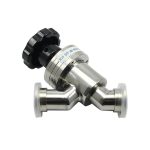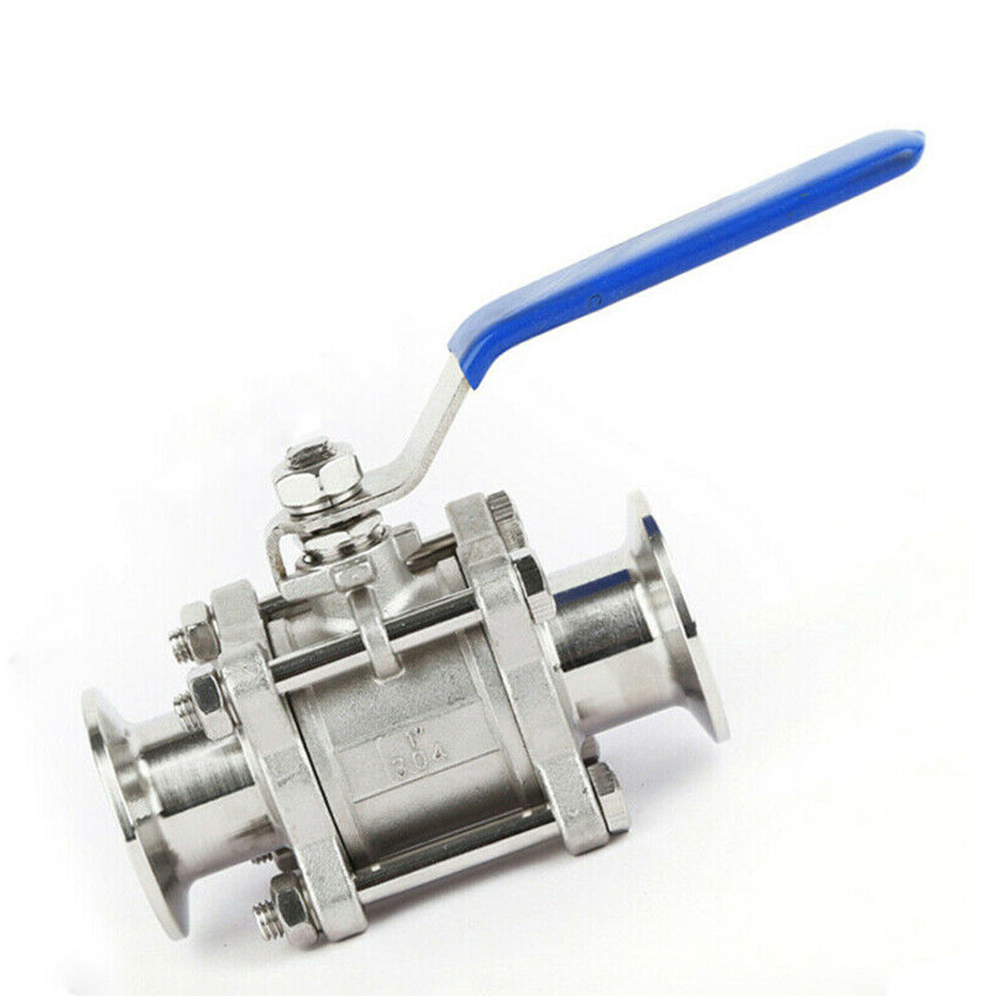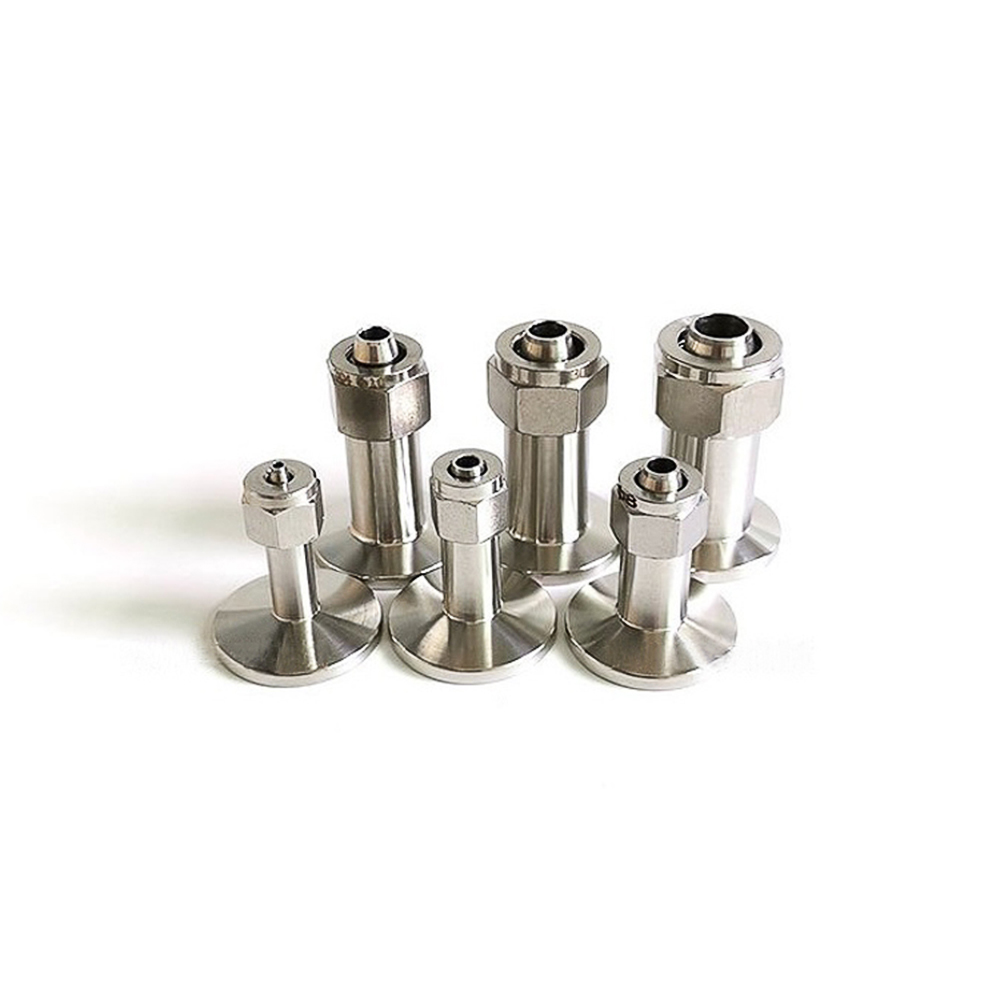
Pressure Test Methods for Various Valves
Commonly used media for valve pressure test are water, oil, air, steam, nitrogen, etc. The pressure test methods for various valves are as follows.
(1) For the strength test of the stop valve and throttle valve, the assembled valve is usually placed in the pressure test rack, the valve disc is opened, the medium is injected to the specified value, and the valve body and valve cover are checked for damage Sweat and leakage. The strength test can also be performed on a single piece. Only stop valves are used for sealing test. During the test, the valve stem of the shut-off valve is in a vertical state, the valve flap is opened, and the medium is introduced from the bottom end of the valve flap to the specified value. Check the packing and gasket; close the valve flap after passing the test, and open the other end to check for leakage. If both the valve strength and tightness tests are to be done, the strength test can be done first, then the pressure is reduced to the specified value of the tightness test, and the packing and gaskets are checked; then the valve flap is closed and the outlet end is opened to check whether the sealing surface is leaking.
(2) Gate valve
The strength test of gate valve is the same as that of globe valve.
There are two methods for the sealing test of the gate valve.
① Open the gate to increase the pressure in the valve to the specified value; then close the gate and immediately take out the gate valve to check whether there is any leakage at the seals on both sides of the gate or directly inject the test medium into the plug on the valve cover to the specified value , Check the seals on both sides of the gate. The above method is called intermediate pressure test. This method is not suitable for sealing test on gate valves with nominal diameter below DN32mm.
② Another method is to open the gate to increase the test pressure of the valve to the specified value; then close the gate and open the blind plate at one end to check whether the sealing surface is leaking. Reverse the head and repeat the above test until it is qualified.
The sealing test of the gate valve packing and gasket should be carried out before the sealing test of the gate.
(3) Ball valve
The strength test of the ball valve should be carried out with the ball half open.
① Floating ball valve tightness test: put the valve in a half-open state, introduce the test medium at one end, and close the other end; rotate the ball several times, open the closed end when the valve is in the closed state, and check the sealing performance at the packing and gasket at the same time. There must be no leakage. Then introduce the test medium from the other end and repeat the above test.
② Sealing test of fixed ball valve: before the test, rotate the sphere without load for several times, the valve is in the closed state, and the test medium is introduced from one end to the specified value; the sealing performance of the inlet end is checked with a pressure gauge, and the accuracy of the pressure gauge is 0.5. ~1 level, measuring range is 1.6 times of test pressure. Within the specified time, there is no decompression phenomenon as qualified; then introduce the test medium from the other end, and repeat the above test. Then, the valve is in a half-open state, both ends are closed, the inner cavity is filled with medium, and the packing and gasket are checked under the test pressure, and there should be no leakage.
③ The three-way ball valve should be tested for tightness at various positions.
(4) Plug valve
① During the strength test of the plug valve, the medium is introduced from one end, the remaining passages are closed, and the plug is rotated to the fully open working positions for the test. The valve body is qualified without any leakage.
② During the sealing test, the straight-through plug should keep the pressure in the cavity equal to that of the passage, rotate the plug to the closed position, check from the other end, and then rotate the plug 180° to repeat the above test; three-way or four-way plug valve The pressure in the cavity and one end of the passage should be kept equal, the stopper should be rotated to the closed position in turn, the pressure should be introduced from the right-angle end, and the other end should be inspected simultaneously. Before the plug valve test, it is allowed to apply a layer of non-acid dilute lubricating oil on the sealing surface, and no leakage or enlarged water droplets within the specified time are qualified. The test time of the plug valve can be shorter, generally 1~3min according to the nominal diameter. The plug valve for gas should be tested for air tightness at 1.25 times the working pressure.
(5) Butterfly valve
The strength test of the butterfly valve is the same as that of the globe valve.
The sealing performance test of the butterfly valve should introduce the test medium from the end of the medium flow, the butterfly plate should be opened, the other end should be closed, and the injection pressure should reach the specified value; after checking the packing and other seals without leakage, close the butterfly plate, open the other end, and check the butterfly No leakage at the plate seal is qualified. The butterfly valve used to adjust the flow can not be tested for sealing performance.
(6) Diaphragm valve
In the diaphragm valve strength test, the medium is introduced from either end, the valve flap is opened, and the other end is closed. After the test pressure rises to the specified value, it is qualified to see that the valve body and valve cover have no leakage. Then reduce the pressure to the tightness test pressure, close the valve flap, and open the other end for inspection. No leakage is considered qualified.
(7) Check valve
Check valve test state: lift check valve disc axis is in a position perpendicular to the horizontal; swing check valve channel axis and disc axis are in a position approximately parallel to the horizontal line.
In the strength test, the test medium is introduced from the inlet end to the specified value, and the other end is closed. It is qualified if there is no leakage in the valve body and bonnet.
In the sealing test, the test medium is introduced from the outlet end, and the sealing surface is checked at the inlet end. No leakage at the packing and gasket is qualified.
(8) Safety valve
① The strength test of the safety valve is the same as other valves. It is tested with water. When testing the lower part of the valve body, the pressure is introduced from the inlet I=I end, and the sealing surface is closed; when testing the upper part of the valve body and the bonnet, the pressure is introduced from the outlet El end, and the other ends are closed. No leakage of valve body and bonnet within the specified time is qualified.
② For sealing test and constant pressure test, the general use medium is: steam valve uses saturated steam as the test medium; ammonia or other gas valves use air as the test medium; water and other non-corrosive liquid valves use water as the test medium . For safety valves in some important positions, nitrogen is often used as the test medium.
The sealing test shall be conducted with the nominal pressure value as the test pressure, the number of times shall not be less than twice, and no leakage within the specified time shall be qualified. There are two leak detection methods: one is to seal the joints of the safety valve, and use butter to seal the thin paper on the flange of the outlet. The plastic plate or other plate seal is attached to the lower part of the outlet flange, and the valve disc is sealed with water. It is qualified if the water does not bubble.
The safety valve constant pressure and return pressure test times are not less than 3 times, and it is qualified as conforming to the regulations.
The various performance tests of safety valves see GB/T 12242-1989 ((Safety valve performance test methods).
(9) Pressure reducing valve
① The strength test of the pressure reducing valve is generally assembled after a single piece test, and it can also be tested after assembly. The duration of the strength test: 1min for DN<50mm; more than 2min for DN65~150mm; more than 3min for DN>150mm.
After the bellows and the components are welded, apply 1.5 times the maximum pressure after the valve, and conduct a strength test with air.
② The sealing test shall be carried out according to the actual working medium. When testing with air or water, perform the test at 1.1 times the nominal pressure; when testing with steam, perform the test at the highest working pressure allowed under the working temperature. The difference between the inlet pressure and the outlet pressure must not be less than 0.2MPa. The test method is: after the inlet pressure is adjusted, gradually adjust the adjusting screw of the valve so that the outlet pressure can change sensitively and continuously within the range of the maximum and minimum values without stagnation or jamming. For the steam pressure reducing valve, when the inlet pressure is adjusted, the valve is shut off after the valve is closed, and the outlet pressure is the highest and lowest value. Within 2 minutes, the rise in the outlet pressure should meet the requirements in Table 4.176-22. At the same time, the pipeline behind the valve The volume meets the requirements in Table 4.18 as qualified; for water and air pressure reducing valves, when the inlet pressure is adjusted and the outlet pressure is zero, close the pressure reducing valve and perform a tightness test. If there is no leakage within 2 minutes, it is qualified.







